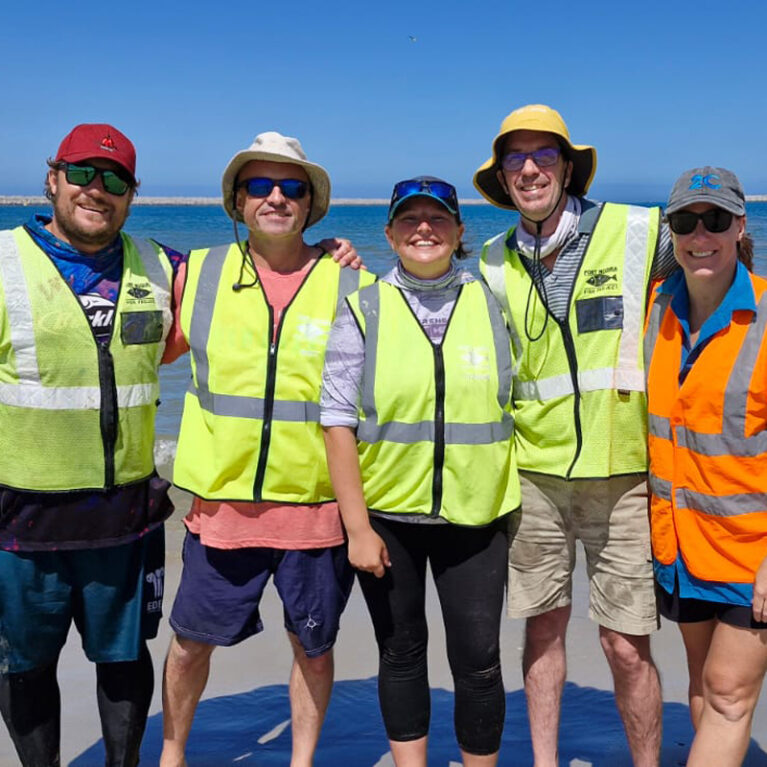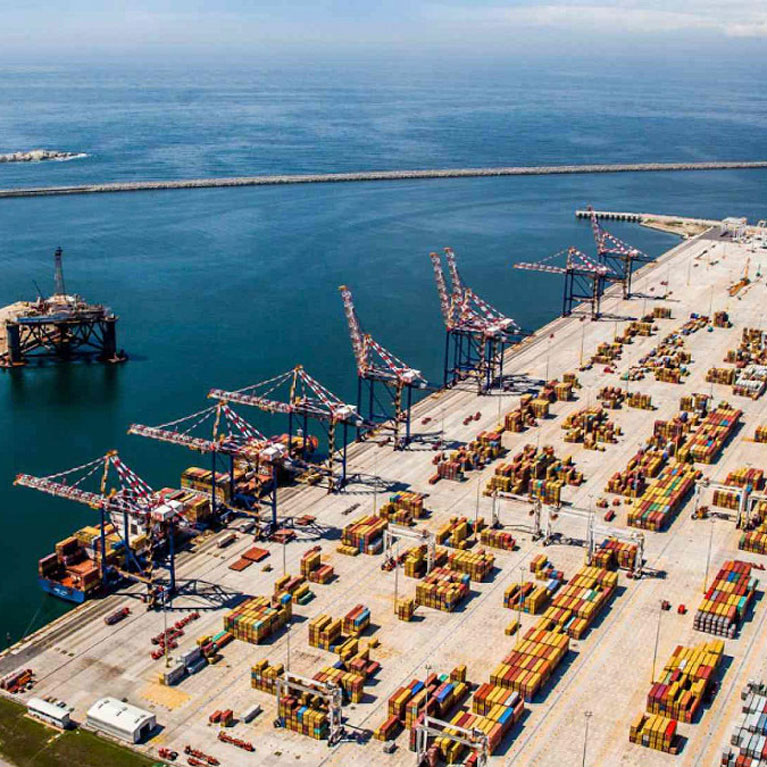Can eco-engineering make a man-made ocean fish-friendly?
Harbours and ports are essential for our economies, but what do sharks make of these man-made structures? That’s the question Vivienne is asking, hoping to understand how sharks and rays are adapting to our increasing human footprint in the ocean. She’ll be using baited remote underwater video systems (BRUVs) to monitor the sharks and rays using the port of Ngqura, South Africa’s only artificial port. The area is important for at least 29 sharks and rays, six of which are Critically Endangered and another six Endangered. Vivienne hopes that by understanding artificial habitats, we can boost their conservation potential.
I grew up in a small town near the sea in the Eastern Cape, South Africa. Despite being told it wasn’t what girls do, I tagged along with my father and brother on every fishing trip to the sea. I’ve held the ocean in my hands from a very young age, and it has been shocking to notice how much it has changed since I was that little girl. I am still an avid recreational angler, participating in fish-tagging programmes and citizen science tagging. I use my scientific background from my studies and my recognition as one of...


Man-Made Seascapes as essential Sharks and Ray habitats, from pupping grounds to residency and refuge.
To boost the conservation potential of artificial habitats for shark and ray communities and work towards fish-friendly harbours along a man-made coastline.
We build defences against the ocean’s power to keep our cities safe and dig out harbours to facilitate trade. In some developed countries, more than half the coastline is artificial. To ensure that we keep these existing man-made structures fish friendly, we need to find out how animals such as sharks and rays adapt to them and shape their lives around them. In a man-made marine environment, this could prove crucial to their conservation.
Research on artificial structures is growing, mainly as we try to ensure that these structures support life instead of replacing it with barren concrete. This field is called eco-engineering and one of its most important steps is to look back at existing examples to understand how marine life has adapted to a new version of normal in a habitat that is nothing like it was before. The artificial structures can be breakwaters, rock armoury, sea walls or the working parts of a busy harbour. It turns out that little is known about how they impact sharks and rays. Apart from some research in the massive natural estuary of Sydney Harbour, we don’t know how, and why, sharks and rays come into novel habitats like ports and harbours.
There is one artificial port in South Africa, the port of Ngqura, and long-term monitoring research suggests that this is a very special place for at least 29 shark and ray species. Six of these species are classified as Critically Endangered and six as Endangered on the IUCN Red List of Threatened Species. This project will use underwater footage to reveal the full community of sharks and rays, including species the previous monitoring programme didn’t pick up. From this footage, we can see which species use Ngqura all year round and call it home. Some species may come in just to escape unfavourable conditions at sea; others may find it a suitable place to give birth or a safe place for pups to mature. Once we understand how and why sharks and rays are using our artificial coastline, then we can begin to work on boosting the potential to conserve them.
This project aims to capture for a whole year underwater footage that shows how the shark and ray community uses the port of Ngqura in South Africa. We will do this using non-invasive and non-destructive stereo baited remote underwater video systems. The footage will then enable us to answer the following questions:
- What species make up the shark and ray community?
- What are the species-specific uses of this artificial habitat?
- Are there specific characteristics of this artificial harbour that attract sharks and rays, and would we need to ensure that no further development disrupts these areas?

